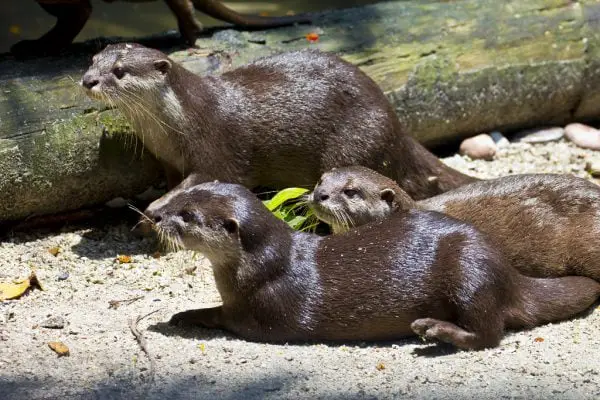Walruses, those majestic giants of the Arctic, captivate with their imposing tusks, blubbery bodies, and surprising social complexity. Beyond their blustery bellows and playful interactions, these remarkable marine mammals exhibit diverse group behaviors, making the language used to describe them as intriguing as their lives. By delving into the collective nouns used for walruses, we embark on a journey beyond the “herd,” exploring their social dynamics, ecological significance, and the challenges they face in a changing world.
Collective Nouns For Walrus
While “herd” reigns supreme as the most common term for a group of walruses, signifying a large and often moving group, other terms paint a more nuanced picture depending on the context:
- Herd: This term evokes a sense of movement, abundance, and shared purpose. It signifies a large group of walruses traveling together, often in search of food or breeding grounds. The image it creates is one of a massive congregation of walruses traversing the icy waters, their synchronized movements and shared destination highlighting their social cohesion and dependence on each other.
Example: As the sun dipped below the horizon, casting long shadows across the frozen landscape, a herd of walruses emerged from the water. Their powerful flippers propelled them forward in a determined rhythm, their tusks glinting in the fading light, showcasing the sheer magnitude and coordinated movement of this impressive gathering.
- Pod: This term evokes a sense of community, shared space, and potential for collaboration. It signifies a smaller and more localized group of walruses, often residing in the same area and engaging in social interactions. The image it creates is one of a group of walruses resting on an ice floe, calves nestled between adults, occasionally interacting through vocalizations and playful nudges, highlighting their social bonds and shared habitat.
Example: Nestled amongst the jagged ice formations, a pod of walruses basked in the warmth of the Arctic sun. Mothers nuzzled their playful calves, while older males engaged in playful sparring matches, showcasing the diverse social interactions and shared space within this smaller group.
- Team: While less common, “team” signifies a group of walruses collaborating towards a specific goal. It evokes a sense of coordination, shared effort, and problem-solving. Though not as frequently observed as in other species, this term acknowledges the potential for cooperative behavior within walrus groups, such as working together to defend against predators or secure access to food sources.
Example: As a polar bear approached the edge of the ice floe, a team of walruses gathered at the water’s edge. Their tusks clicked together in a warning display, their bodies forming a defensive barrier, showcasing the potential for coordinated action when faced with a common threat.
- Rookery: This term, though primarily used for bird colonies, can also signify a large breeding colony of walruses on land. It evokes a sense of abundance, shared purpose, and temporary residency. The image it creates is one of a teeming mass of walruses crowded onto a rocky shoreline, mothers tending to their young amidst a cacophony of calls, highlighting the temporary nature of these gatherings and their focus on reproduction.
Example: During the breeding season, a rookery of walruses transformed the once barren coastline. Mothers fiercely protected their young amidst the jostling throng, while males competed for dominance, showcasing the dynamic social interactions and temporary nature of this massive gathering.
Interesting Facts About Walruses
Understanding these collective nouns goes beyond mere vocabulary; it allows us to appreciate the intricate world of walruses and their vital role in the Arctic ecosystem:
Social Powerhouses: Despite their solitary tendencies outside the breeding season, walruses exhibit remarkable social behaviors. They form strong bonds with their mothers, engage in playful interactions with their young, and communicate through a diverse array of vocalizations and body language.
Ecological Guardians: Walruses play a crucial role in maintaining the health of Arctic ecosystems. They act as benthic feeders, using their sensitive whiskers to locate clams and other invertebrates on the seabed. Their grazing habits help maintain the balance of populations within the marine food web.
Facing the Future: Walruses face numerous challenges due to climate change and human activities. The loss of sea ice due to warming temperatures disrupts their breeding and foraging grounds while hunting and pollution pose additional threats.
Final Thoughts
From the collaborative “team” to the bustling “rookery,” the diverse collective nouns for walruses offer a glimpse into their multifaceted lives and enduring presence in the Arctic landscape.
Also Read:






